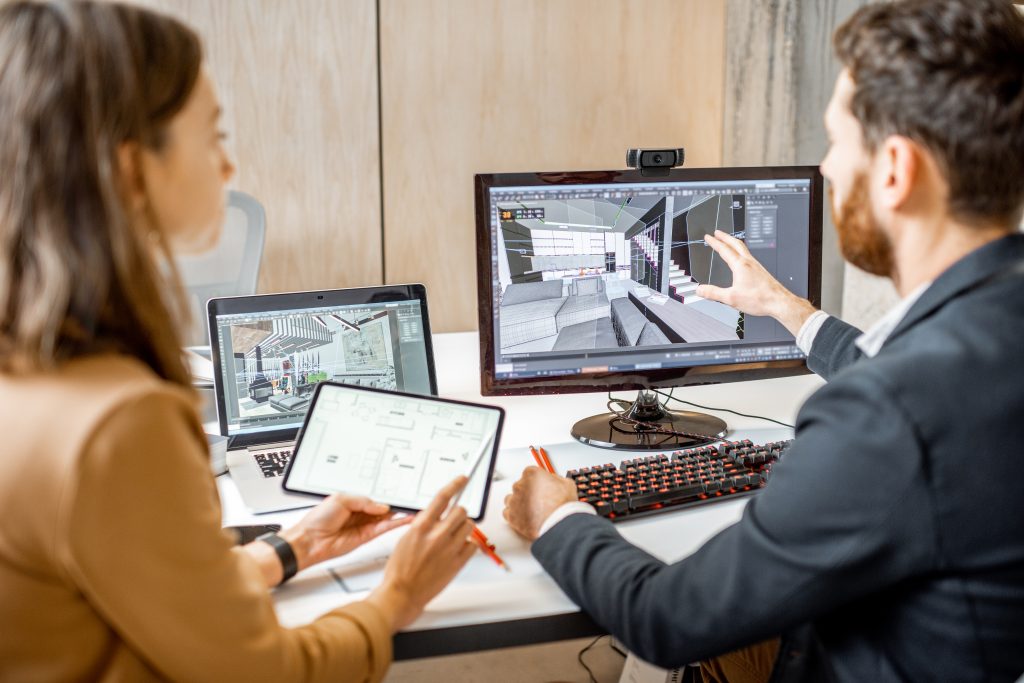Building Information Modelling (BIM) is an innovative construction methodology that was first conceptualised in the 1970s as the Building Description System. It was in 1992 that the term ‘building information modelling’ was first used in a research paper entitled Automation in Construction. By 2002, BIM was the standard term for the digital representation of the building process.

What is Building Information Modelling (BIM)?
According to the National Building Specification, BIM is ‘a process for creating and managing information on a construction project throughout its whole life cycle’. It is the digital representation of the physical and functional characteristics of a building, shared across all construction parties.
BIM facilitates collaboration. It is the process that defines, creates and manages construction project information that is simultaneously accessible by architects, engineers, contractors, subcontractors and other stakeholders. That information relates to the design, construction, maintenance and use of a building.
Improved collaboration
By having real-time access to digital shared information, all parties can collaborate and coordinate different elements of a build without the potential for miscommunication and errors that lead to delays. Design and construction plans can be reviewed and amended without inconvenient and lengthy consultations.
Enhanced efficiencies and productivity
BIM software provides visualisation and simulation of construction processes which creates consistencies across teams, more strategic decision-making and optimised time management. These factors lead to greater efficiencies and increased productivity. In a study of over 1000 construction professionals, featured in the NBS (National Building Specification) 10th Annual Report, 71% said they’ve become more productive.
Improved quality
Through shared digital resources, BIM facilitates greater accuracies in planning and coordination to produce higher quality finished products. BIM is central to quality control processes and meeting industry standards.
Better time management and reduced cost
Potential problems can be identified by BIM before a project begins which mitigates expensive errors and allows for more accurate costings. Components can also be built off-site using BIM information which reduces on-site construction time.
A safer approach
The visibility provided by BIM eliminates risk which leads to a safer approach and fewer opportunities for compromising safety. 71% of respondents to the NBS study said BIM makes projects safer.
Whole life building management
BIM benefits the whole life of a building, not just the construction process. BIM software is used to manage building systems once the construction process has ended. Maintenance planning, space management and asset management can all be controlled through BIM.
UK Adoption of Building Information Modelling
According to an article published in PBC Today, adoption rates of BIM software in the UK have been steadily increasing. Surveys have revealed that around 60% of all building projects now use BIM planning software. A Pinnacle Infotech article claims that around a quarter of companies that use BIM do so for all projects while half use it for the majority of their projects.
BIM standards and legislation
BIM standards and legislation are governed by the UK BIM Framework. The ISO 19650 series of standards defines the international BIM process, with the PAS 1192 standards defining the BIM process in the UK.
The PAS 1192 framework is an information management specification for the delivery (capital) phase of construction projects as well as the lifecycle of the building.
More information about the standards and legislation of the UK BIM Framework can be found on its website.
Challenges of Building Information Modelling adoption
a) The perceived high implementation costs of buying BIM software, training staff and implementing new practices present challenges for adoption. The long term savings due to improved efficiencies arguably outweigh those costs.
b) The lack of trained BIM professionals is also a challenge as BIM is not extensively taught in undergraduate courses.
c) Stakeholder resistance impacts other parties and therefore requires cultural change.
Centre for Construction Best Practice (CCBP) Membership
CCBP champions the safest, most cost-effective, and efficient construction processes possible by exploring new construction methodologies like BIM that transform traditional construction processes.
If you would like to find out more about member benefits, or you have an idea for a research project, get in touch.
References
